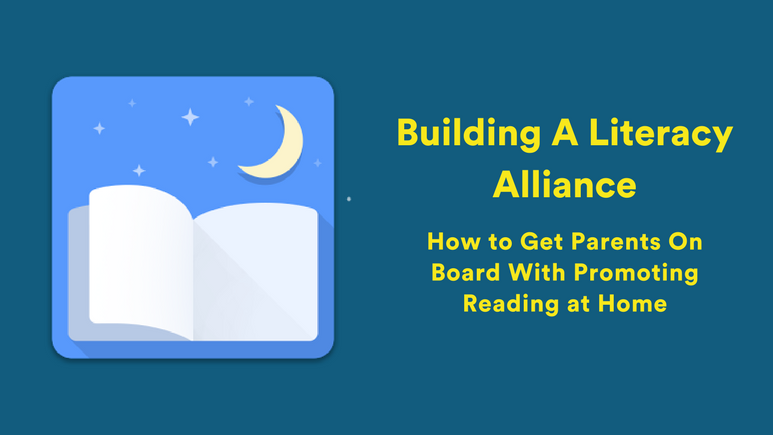
There seem to be no certain answers when it comes to parenting.
For every sure-fire approach to raising healthy and happy children, there is an alternative or even opposite theory with just as much evidence.
So what if we said there is one thing parents can do that is scientifically proven to help children be more academically successful, have fewer absences in school, enjoy school more, behave better, and have a higher likelihood of high school graduation?
Sounds pretty hard to argue with, huh?
And best of all, this parenting move with huge payoffs is relatively easy to do.
From an early age, children benefit from having their parents involved in their literacy.
Reading to children, and later reading with children or having your children read to you, is one of the best things a parent can do for their child’s academic and professional future.
As a teacher, what role should you play in getting parents on board with promoting reading at home?
Below are several ideas for getting parents invested in promoting family literacy, regardless of what grade you teach.
Host a Family Literacy Night
A Family Literacy Night is a great event to build up the hype and fun around families reading together.
Typically organized as a school-wide event, this is a night for students and their guardians to participate in a number of reading-related activities.
Depending on the ages of the students, you might have families listen to a read aloud, design their own bookmarks, do a newspaper scavenger hunt (see below), write their own fairy tales, or any other number of reading-related activities.
Instead of being a one-off event, this night should kick off a culture of reading as a family.
Use Read-Alouds in Class
While the idea of a “read-aloud” might conjure images of kindergarteners sitting cross-legged on a carpet, we’ve seen teachers successfully use read alouds in classes all the way up to high school.
Regardless of the grade, there are plenty of benefits of listening to someone read with the proper fluency, tone, and intonation.
Consider reading aloud the first half of a short story in class. Then, assign students to read the rest with a guardian as homework.
Prioritize Reading for Pleasure
Countless studies have proven that reading for pleasure is a key part of becoming a better reader.
While many schools try to build in time for students to read for pleasure in the classroom, ideally this reading should take place at home.
Many English and language arts teachers make reading at home a large portion of what students must complete for homework.
With the proper structures in place, this can be a great way to help students log hours and hours of reading for pleasure. As a result, they’re likely to see their abilities soar.
Use Reading Logs
If you’re going to make reading for pleasure a part of your nightly homework, it’s a good idea to have some sort of accountability system in place.
Reading logs are a great way for students to document how long they read for and what they read. Involve parents by requiring them to sign off each night that said reading really took place.
There are tons of templates for reading logs online. We recommend printing them on a brightly colored paper so they are easy for you and parents to spot.
The important thing here is to show and explain these to parents at the beginning of the year so that they know their child should be reading for 15-20 minutes a night before getting a signature.
Take a Library Trip
A fun alternative to or option for a Family Literacy Night is to host a public library visit for your class.
You could do this either during or after school or on a Saturday. Invite families to meet at the local library to get a card, take a tour, and check out books.
Many middle and high school teachers have alternatively made it their summer homework for students to get a public library card before the start of a new school year.
Assign a Newspaper Scavenger Hunt
This is a great activity to bring parents and students together around reading. For a given night or weekend, create a scavenger hunt to be completed using the local newspaper.
Here are some possible items to look for:
- Write the title of a local news story.
- Write the title of an international news story.
- Find a map. Explain what the map shows and why it is important for that article.
- Find an article about someone committing a crime. What was the crime?
- Find the temperature in a city where a family member lives.
- Find five nouns that start with “s”.
You can even customize these items to align with content you’re currently teaching, be it geography, grammar, punctuation, or history.
With a little work on the front end, you can set up a culture of reading in your classroom that reaches all the way into your students’ homes. The payoffs are bound to be huge!



Leave a Reply